AMD Radeon R9 285 Review: Feat. Sapphire R9 285 Dual-X OC
by Ryan Smith on September 10, 2014 2:00 PM ESTGCN 1.2 - Image & Video Processing
AMD’s final set of architectural improvements for GCN 1.2 are focused on image and video processing blocks contained within the GPU. These blocks, though not directly tied to GPU performance, are important to AMD by enabling new functionality and by offering new ways to offload tasks on to fixed function hardware for power saving purposes.
First and foremost then, with GCN 1.2 comes a new version of AMD’s video decode block, the Unified Video Decoder. It has now been some time since UVD has received a significant upgrade, as outside of the addition of VC-1/WMV9 support it has remained relatively unchanged for a couple of GPU generations.
With this newest generation of UVD, AMD is finally catching up to NVIDIA and Intel in H.264 decode capabilities. New to UVD is full support for 4K H.264 video, up to level 5.2 (4Kp60). AMD had previously intended to support 4K up to level 5.1 (4Kp30) on the previous version of UVD, but that never panned out and AMD ultimately disabled that feature. So as of GCN 1.2 hardware decoding of 4K is finally up and working, meaning AMD GPU equipped systems will no longer have to fall back to relatively expensive software decoding for 4K H.264 video.
On a performance basis this newest iteration of UVD is around 3x faster than the previous version. Using DXVA checker we benchmarked it as playing back a 1080p video at 331fps, or roughly 27x real-time. For 1080p decode it has enough processing power to decode multiple streams and then-some, but this kind of performance is necessary for the much higher requirements of 4K decoding.
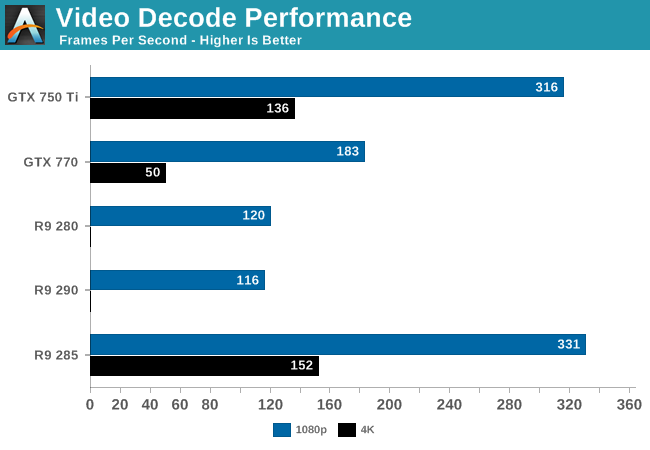
Speaking of which, we can confirm that 4K decoding is working like a charm. While Media Player Classic Home Cinema’s built-in decoder doesn’t know what to do for 4K on the new UVD, Windows’ built-in codec has no such trouble. Playing back a 4K video using that decoder hit 152fps, more than enough to play back a 4Kp60 video or two. For the moment this also gives AMD a leg-up over NVIDIA; while Kepler products can handle 4Kp30, their video decoders are too slow to sustain 4Kp60, which is something only Maxwell cards such as 750 Ti can currently do. So at least for the moment with R9 285’s competition being composed of Kepler cards, it’s the only enthusiast tier card capable of sustaining 4Kp60 decoding.
This new version of UVD also expands AMD’s supported codec set by 1 with the addition of hardware MJPEG decoding. AMD has previously implemented JPEG decoding for their APUs, so MJPEG is a natural extension of that. Though MJPEG is a fairly uncommon codec for most workloads these days, so outside of perhaps pro video I’m not sure how often this feature will get utilized.
What you won’t find though – and we’re surprised it’s not here – is support for H.265 decoding in any form. While we’re a bit too early for full fixed function H.265 decoders since the specification was only ratified relatively recently, both Intel and NVIDIA have opted to bridge the gap by implementing a hybrid decode mode that mixes software, GPU shader, and fixed function decoding steps. H.265 is still in its infancy, but given the increasingly long shelf lives of video cards, it’s a reasonable bet that Tonga cards will still be in significant use after H.265 takes off. But to give AMD some benefit of the doubt, since a hybrid mode is partially software anyhow, there’s admittedly nothing stopping them from implementing it in a future driver (NVIDIA having done just this for H.265 on Kepler).
Moving on, along with their video decode capabilities, AMD has also improved on their video encode capabilities for GCN 1.2 with a new version of their Video Codec Engine. AMD’s hardware video encoder has received a speed boost to improve its encoding performance at all levels, and after previously being limited to a maximum resolution of 1080p can now encode at resolutions up to 4K. Meanwhile by AMD’s metrics this new version of VCE should be capable of encoding 1080p up to 12x over real time.
A quick performance check finds that while the current version of Cyberlink’s MediaEspresso software isn’t handling 4K video decoding quite right, encoding from a 1080p source shows that the new VCE is roughly 40% faster than the old VCE in our test.
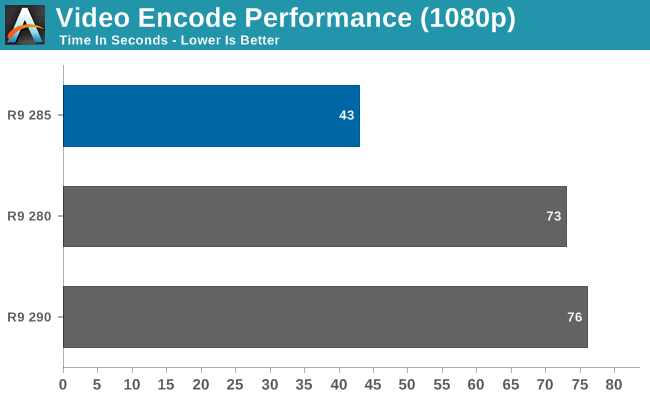
4K video is still rather new, so there’s little to watch and even less of a reason to encode. That of course will change over time, but in the meantime the most promising use of a hardware 4K encoder would be 4K gameplay recording through the AMD Gaming Evolved Client’s DVR function.


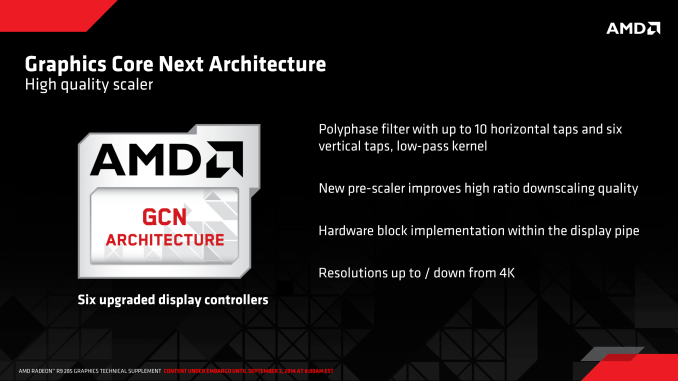
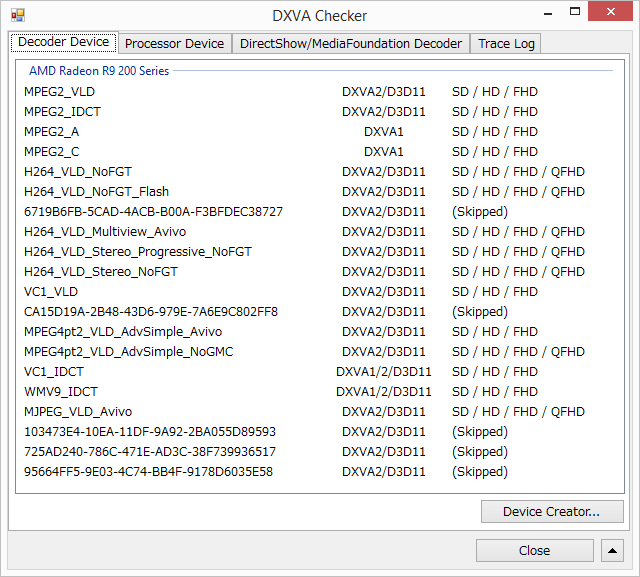
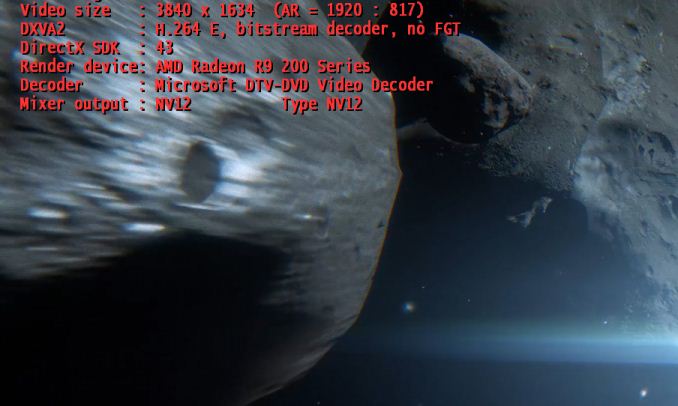








86 Comments
View All Comments
CrazyElf - Wednesday, September 10, 2014 - link
All in all, this doesn't really change the market all that much.I still very firmly feel that the R9 290 right now (Q3 2014) remains the best price:performance of the mid to high end cards. That and the 4GB VRAM which may make it more future proof.
What really is interesting at this point is what AMD has to respond on Nvidia's Maxwell.
MrSpadge - Wednesday, September 10, 2014 - link
I Agree - Tonga is not bad, but on the other hand it does not change anything substantially compared to Tahiti. This would have been a nice result 1 - 1.5 years after the introduction of Tahiti. But that's almost been 3 years ago! The last time a GPU company showed no real progress after 3 years they went out of business shortly afterwards...And seing how AMD brags to beat GTX760 almost makes cry. That's the double cut-down version of a 2.5 years old chip which is significantly smaller than Tonga! This is only a comparison because nVidia kept this card at a far too high price because there was no competitive pressure from AMD.
If this is all they have their next generation will get stomped by Maxwell.
iLovefloss - Wednesday, September 10, 2014 - link
So all you got from this review is that Tonga is a cut down version of Tahiti? After reading this review, this is the impression you were left with?MrSpadge - Thursday, September 11, 2014 - link
Nope. But in the end the result performs just the same at even almost the same power consumption. Sure, there are some new features.. but so far and I expect for the foreseeable future they don't matter.Demiurge - Wednesday, September 10, 2014 - link
This is the first mid-range card to have all the value add features of the high-end cards. I wish AMD would leverage TrueAudio better, but the other features and the nice TDP drop.The color compression enhancement is a very interesting feature. I think that in itself deserves a little applause because of its significance in the design and comparing to the 280's. I think this is more significant, not as a performance feature, but similar to what Maxwell represented for NV in terms of efficiency. Both are respectable design improvements, in different areas. It's a shame they don't cross-license... seems like such as waste.
MrSpadge - Thursday, September 11, 2014 - link
Well, the TDP-drop is real, but mostly saves virtual power. By this I mean that 280 / 7950 never come close to using 250 W, and hence the savings from Tonga are far less than the TDP difference makes it seem. The average between different articles seems to be ~20 W saving at the wall and establishes about a power-efficiency parity with cards like GTX670.The color compression could be Tongas best feature. But I still wonder: if Pitcairn on 270X comes so close to 285 and 280 performance with 256 bit memory bus and without color compression.. how much does it really matter (for 285)? To me it seems that Tahiti most often didn't need that large bus rather than color compression working wonders for Tonga. Besides, GTX770 and GTX680 also hold up fine at that performance level with a 256 bit bus.
Demiurge - Thursday, September 11, 2014 - link
The TDP drop is something I did not think about being a paper launch value. You make a good point about the color compression too. It will be interesting how both fair. That may be an interesting topic to follow up during the driver refresh.As an owner of GTX 260 with a 448-bit bus, I can tell you that with anti-aliasing, it matters quite a bit as that becomes the limiter. The shader count is definitely not the limiter usually in the low-end and mid-range displays that these cards will typically be paired with. My GTX 260 and 1280x1024 monitor kind of illustrate that with 216 Shaders/896MB. :-)
It isn't pretty, but I don't see anything that forces me to upgrade yet. Think I've got two more generations or so to wait on before performance is significant enough, or a groundbreaking feature would do it. I'm actually considering upgrading out of boredom and interest in gimmicky features more than anything else at this point.
TiGr1982 - Thursday, September 11, 2014 - link
GTX 260 is like 6 years old now. It's lacking DX11, having less than 1 GB of (relatively slow) GDDR3 VRAM, and overall should be 3-4 times slower than R9 285 or R9 290, I guess.I really didn't think anybody still uses these old gen cards (e.g. I have HD 7950 Boost Dual-X which is essentially identical to R9 280).
P39Airacobra - Friday, January 9, 2015 - link
Because they would loose money! LOL. And they are both about the same anyway, Except AMD goes for brute force to get performance,(like using aV8) And Nvidia uses efficency with power. (Like a turbo charged 4cyl or 6cyl)bwat47 - Thursday, September 11, 2014 - link
"And seing how AMD brags to beat GTX760 almost makes cry. That's the double cut-down version of a 2.5 years old chip which is significantly smaller than Tonga! This is only a comparison because nVidia kept this card at a far too high price because there was no competitive pressure from AMD."You are being pretty silly here. Both AMD and Nvidia were rebranding a lot of cards these last few gens. You can'y go after AMD for rebranding a 2-3 year old chip, and then say its fine if nvidia does it and blame AMD's 'lack of competitive pressure'. If lack of competitive pressure was the reason for rebranding, then there was lack of competitive pressure on both sides.
And I highly doubt the 285 is 'all amd has'. this was just a small update to their product line, to bring some missing features (freesync, true audio etc...), and reduced power consumption to the 28x series. I'm sure there is a 3xx series coming down the road (or whatever they will call it). Both AMD and nvidia have been working been squeezing all they can out of older architecture for the past few years, you can't really put the blame on one of the other without being hypocritical.